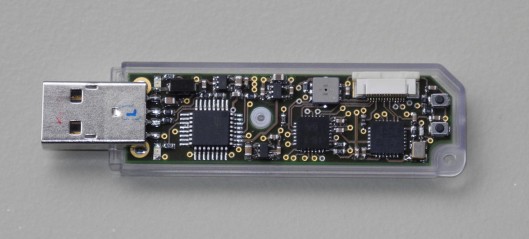Navigation in rooms where GPS does not work

Fraunhofer Research together with Bosch develops Smartsense system - a sensor for smartphones with accurate navigation inside the premises, where the signal of GPS-satellites is not caught.
The system is useful for orientation in large shopping and exhibition centers. The heart of the system is two sensors: an accelerometer registers the speed of movement of a person, and a magnetic field sensor tracks movements relative to the earth’s natural magnetic field. The joint work of sensors provides accurate data about the location of a person that can be used by navigation applications of a smartphone.
')
The operation of the system is impossible without a previously known room plan. Fraunhofer Research believes that, over time, users will be able to download plans to the navigation application, or scan QR codes that will contain a link to download.
Not so long ago, a question was discussed at Habré, for which the particle filter algorithm can be used. Here we have a vivid example. Obviously, since the system requires knowledge of the floor plan, that is, a priori information, it is based on spatial filtering, for example, the Kalman filter or Monte Carlo ( particle filter ).
You can imagine how it works: the program captures the last known value of the GPS coordinates, obviously, it is somewhere near the entrance to the shopping center. Further, the accelerometer works as an inertial navigation system, and the magnetic sensor (compass?) Is apparently used to adjust the accelerometer's arbitrary orientation - the phone can be in your pocket or in the client’s hand in any position!
If the premises were an indoor stadium, our orientation would be severely limited: an inertial navigation error would quickly accumulate. But if there are corridors inside the room, some passages, walls, then knowing the floor plan and having approximate information about the direction of movement and the speed of the client, you can use these "obstacles" as labels, and assess the position of a person with a smartphone probabilistically.

In the illustration to the source of the news, a certain USB dongle is shown, ostensibly this described super-sensor. Here I am wondering if a separate sensor is needed? Perhaps enough standard accelerometer and a digital compass, which is already in the phone. A good startup would have a clear monetization perspective.
Source: https://habr.com/ru/post/143982/
All Articles